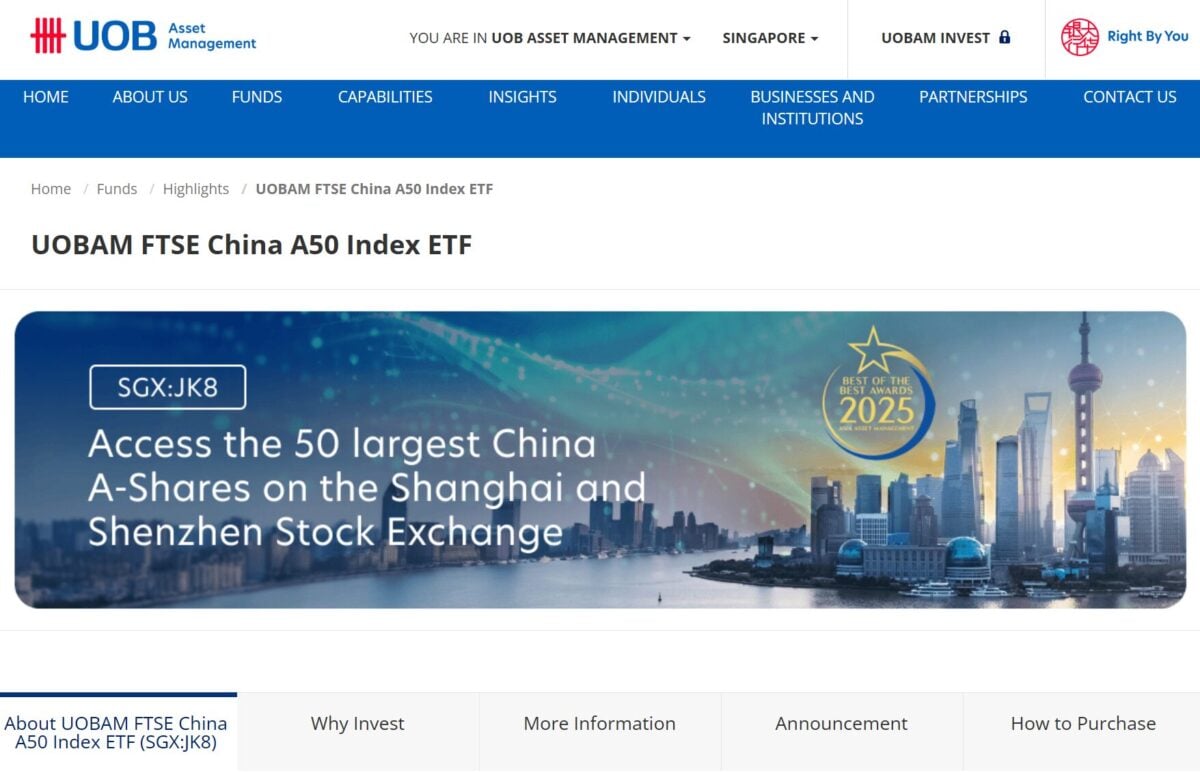
Real Estate Investment Trusts (REITs) are one of the most popular investments in Singapore. Retail investors can gain access to properties and enjoy regular distributions and potential capital gains – all without having to own any physical property.
For reference, there are 41 REITs and property trusts listed in Singapore, with a combined market capitalisation of $92 billion – making up 11% of Singapore’s overall stock market. On Singapore’s benchmark Straits Times Index (STI), 7 of the 30 largest and most liquid companies listed here are REITs.
We can buy or sell REITs just like any other stocks via our brokerages, such as Interactive Brokers (IBKR). For example, since IBKR offers us wide access to over 30 countries, we can invest in REITs that are not only listed in Singapore, but also in the US, Hong Kong, Australia, Japan, Malaysia and other countries.
Here are 5 things every investor should understand and look out for about REITs before investing in them.
#1 It Is Not Exactly Like Buying Real Estate
When you invest in REITs, you become a unitholder. Think of it as becoming an owner of a fraction of the properties that the REITs own. There are advantages and disadvantages to this.
The good thing is that unlike owning individual properties, you do not have to worry about marketing and leasing out the property, maintaining your property or ensuring that tenants pay up on time. In short, you are not operationally involved in the management of the property.
Enjoying this freedom comes with a cost – that’s what the REIT manager will charge for taking on the operational duties. In some sense, they can also be seen as the professionals and can benefit from economies of scale.
However, be mindful that when investing in REITs, retail investors will only ever own a tiny piece of the REIT and will likely have no say in the decisions (major or minor) that will be made. These include whether to acquire new properties or to sell existing properties, taking a bigger loan or deciding on whether the REIT raising funds by offering a discount to only institutional investors.
Read Also: Investing in Property VS REITS: Which is Better
#2 REITs Are Traded On The Stock Exchange
One big advantage of being traded on stock exchanges is the liquidity it provides. You can choose to buy or sell REITs almost immediately on the stock exchange (during trading hours). The price that you see on your stock brokerage platform, such as IBKR, is the current market price, and the spread is transparent. The transaction cost is also relatively low (especially when compared to buying and selling physical properties) – and is the same as buying or selling any other stocks. For example, IBKR charges 0.08% (or a minimum of $2.50) per trade for SGX-listed REITs, while it charges US$0.05 (or a minimum of US$1) per unit of REIT you trade, up to a maximum of 1% of your trade value.
Best of all, you get to settle your trade and receive or dispose the units in the REITs within a few days.
This is unlike transactions that involve physical properties, where the process of buying or offloading a property could take several months. You will likely also need the assistance of real estate agents, who will take a cut off the purchase price, leading to a more expensive transaction cost.
When you invest in REITs, you also do not need to pay any stamp duties, such as the Buyer’s Stamp Duty or Additional Buyer’s Stamp Duty (ABSD), to the government. The only cost you have to bear would be the brokerage commissions that you incur.
On the flipside, being traded on the stock market gives rise to more volatility. Sometimes, when the general stock market is doing badly, REITs may follow perform poorly even when the property market is largely unaffected and REITs remain strong. Prices are also open to the day-to-day volatility of the stock market – this may induce more buying or selling activity compared to owning a physical property.
There are also REIT ETFs that we can invest in. In Singapore, there are 5 REIT ETFs that we can buy:
– Phillip SGX APAC Dividend Leaders REIT ETF (SGX: BYJ (for S$) or SGX: BYI (for US$))
– NikkoAM-Straits Trading Asia Ex Japan REIT ETF (SGX: CFA (for S$) SGX: COI (for US$))
– Lion-Phillip S-REIT ETF (SGX: CLR)
– CSOP iEdge S-REIT Leaders ETF (SGX: SRT (for S$) or SGX: SRU (for US$))
– UOB APAC Green REIT ETF (SGX: GRN (for S$) or SGX: GRE (for US$))
REIT ETFs are basically funds of various REITs. They offer more diversification across not just properties but REIT counters. However, you have to consider the additional charges incurred, including management fees and Trustee fees – on top of the REIT level property management fees.
Nevertheless, there are benefits such as not worrying about individual REITs, share placements or dividend reinvestment plans.
Read Also: Investing in REIT ETFs Listed In Singapore: 5 Things You Need To Know
#3 Diversification
Investing into REITs offer you a way to reduce your risks through diversification. For a start, it offers an asset class apart from equities or bonds.
When it comes to buying individual REITs, instead of owning just one property of your own, most REITs own multiple buildings, sometimes across industries and even countries, with tenants from various businesses.
Majority of the properties owned by REITs are well-occupied. What this means is that there are units that are not rented out. If people were to own individual properties, some people may end up not being able to rent out their units.
Read Also: 7 Types of REITS In Singapore, And The Reasons Why People Invest In Them
#4 Proper Management
For properties to give you the best returns over the long term, they need to be properly managed.
To relay this point, let’s imagine if Plaza Singapura, a mall we consider pretty well-established and frequented by many people, is owned by individuals. This means that for everyone to get a return, every unit in the mall must be rented out.
In most cases, you would consider it a successful mall if all the units were rented out during the year, except for a single one. However, if an individual owned that one unit, he would most likely incur extremely high costs of holding the property, since he is not able to rent out his unit.
This may cause him to lower his rental rate and start a price war. Something that REITs may not need to constantly do.
Also, REITs are able to take advantage of free space more meaningfully to hold pop-up festive stalls, exhibitions, galleries, thus earning better returns. They also work hard behind the scenes to bring in more foot traffic to the malls, and ensure that it is kept relevant. These are things that would be neglected if individuals owned single units in a building.
Over the years, Plaza Singapura has not only utilised its own space well, but also expanded with a whole other wing. This may not be something that happens if the mall was owned by individual owners in the first place.
In addition, REIT managers have to comply with the Monetary Authority of Singapore’s (MAS) policies. These policies ensure REITs are properly managed by only taking on sustainable level of debt and development. It has several regulations imposed on it including its maximum borrowings (up to a maximum of 50% of its total asset value). REITs also cannot spend more than 25% of its total asset value on new developments. And, REITs have to pay out at least 90% of its income to shareholders. These measures make REITs relatively safer for investors.
5. Stable Tax-free Income
REITs can offer good yields and are relatively safe because they own actual physical properties. Currently, REITs in Singapore average a return of about 6.9% yield annually.
This is particularly relevant to investors looking for regular income distributions from stable assets. Even for most stable and safe businesses, profits have to be retained in the company to accommodate for future growth plans and capital expenditures. In contrast, REITs have to distribute 90% of their profits and in regular intervals (mostly half-yearly or quarterly).
The best part about receiving dividends in Singapore is that it is tax-free. This is a far cry from owning an actual property, where you have to fork out annual property tax and income tax for properties that you own and rent.
Start investing in REITs listed in Singapore, and across major REIT markets such as US, Hong Kong, Japan, Australia and more, via IBKR. Apart from one of the widest access, you can also enjoy competitive brokerage commission fees and a trustworthy investment platform.
Read Also: Complete Guide To Start Your REITs Investing Journey In Singapore
The post 5 Things You Need To Know About Investing In REITs In Singapore appeared first on DollarsAndSense.sg.











